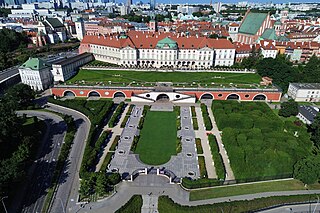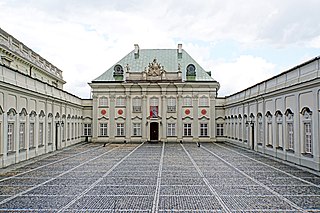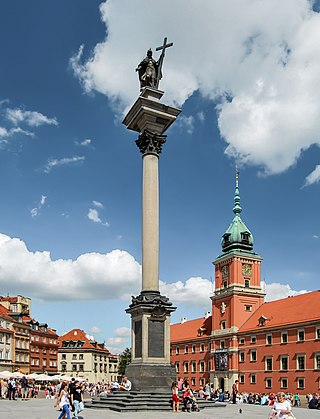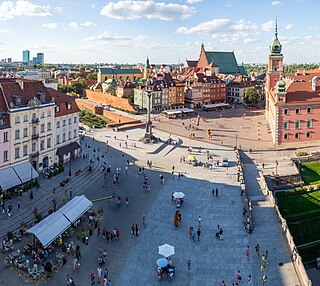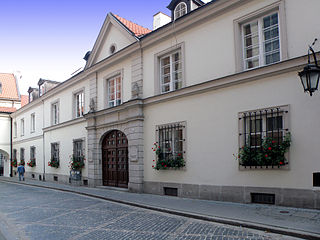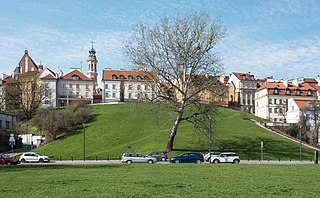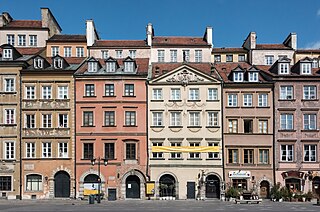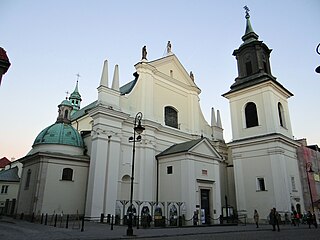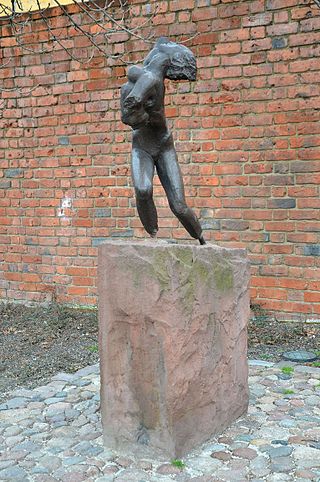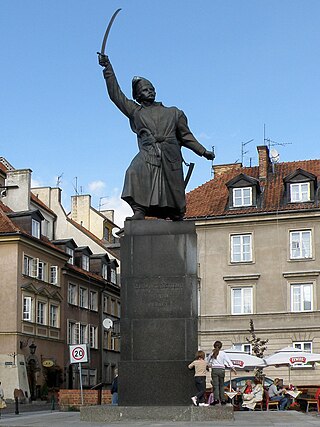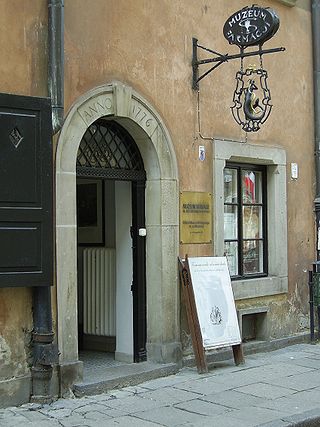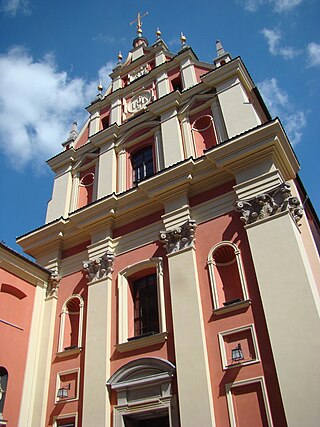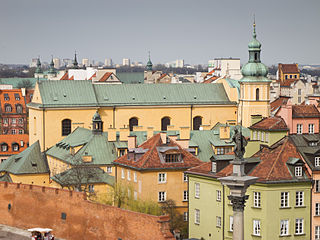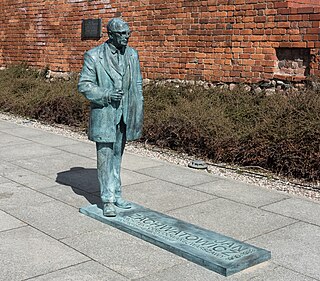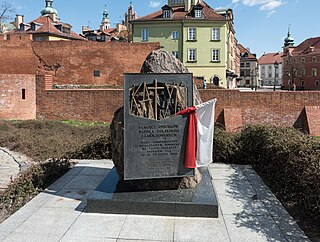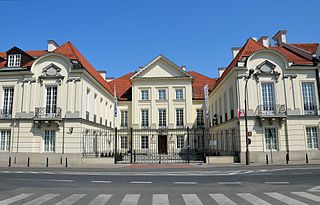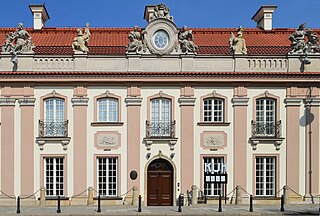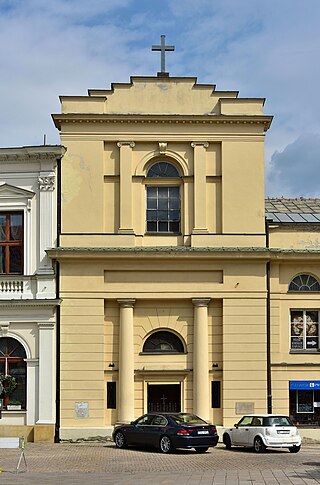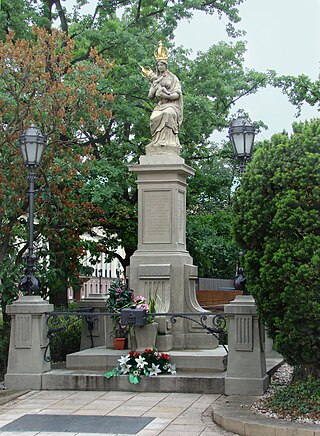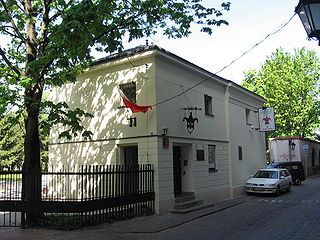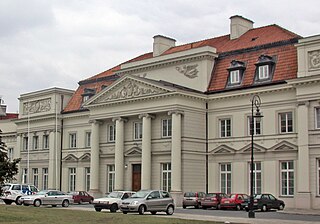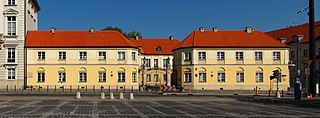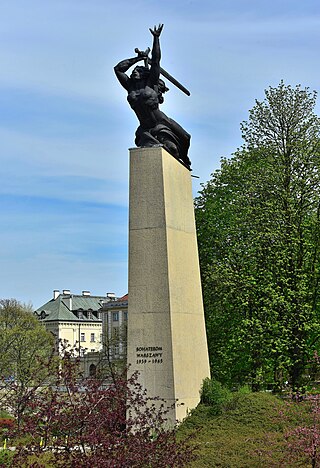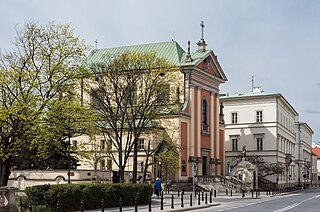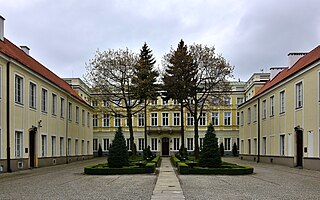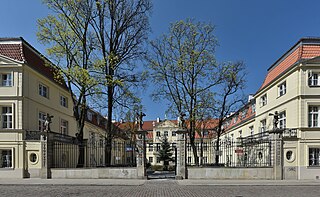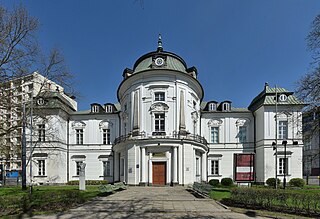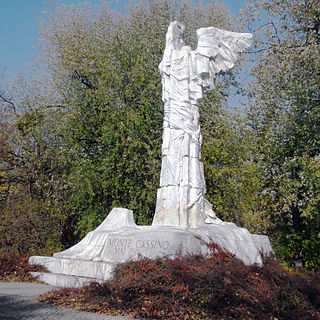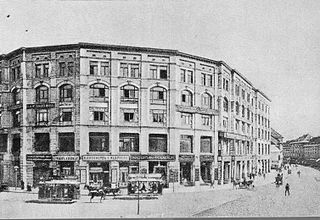Self-guided Sightseeing Tour #1 in Warsaw, Poland
Legend
Guided Free Walking Tours
Book free guided walking tours in Warsaw.
Guided Sightseeing Tours
Book guided sightseeing tours and activities in Warsaw.
Tour Facts
7.1 km
98 m
Experience Warsaw in Poland in a whole new way with our free self-guided sightseeing tour. This site not only offers you practical information and insider tips, but also a rich variety of activities and sights you shouldn't miss. Whether you love art and culture, want to explore historical sites or simply want to experience the vibrant atmosphere of a lively city - you'll find everything you need for your personal adventure here.
Activities in WarsawIndividual Sights in WarsawSight 1: Gardens of the Royal Castle
Castle Gardens – a garden adjacent to the Royal Castle in Warsaw from the side of the Vistula, between the castle and the Wisłostrada. This area of 5.8 hectares is located partly on and below the Warsaw escarpment within the boundaries of the Śródmieście district.
Sight 2: Copper-Roof Palace
The Copper-Roof Palace is an 18th-century palace in Warsaw, Poland. It takes its name from the copper roof, a rarity in the first half of the 18th century. Since 1989 the palace has been a branch of the Royal Castle Museum.
Sight 3: Sigismund's Column
Sigismund's Column, originally erected in 1644, is located at Castle Square, Warsaw, Poland and is one of Warsaw's most famous landmarks as well as the first secular monument in the form of a column in modern history. The column and statue commemorate King Sigismund III Vasa, who in 1596 had moved Poland's capital from Kraków to Warsaw. It is part of the Historic Centre of Warsaw, which was designated a UNESCO World Heritage Site in 1980.
Sight 4: Plac Zamkowy
Castle Square is a historic square in front of the Royal Castle – the former official residence of Polish monarchs – located in Warsaw, Poland. It is a popular meeting place for tourists and locals. The square, of somewhat triangular shape, features the landmark Sigismund's Column to the south-west, and is surrounded by historic townhouses. It marks the beginning of the bustling Royal Route extending to the south.
Sight 5: Galeria Obok ZPAF
Galeria Obok ZPAF – a photo gallery at the Warsaw District of ZPAF. The curator of the gallery is Anna Wolska.
Sight 6: Muzeum Archidiecezji Warszawskiej
The Museum of the Archdiocese of Warsaw is a church museum located at 1 Dziekania Street in Warsaw, presenting collections of sacred art, old art and Polish contemporary art.
Sight 7: Gnojna Góra
Góra Gnojna (Gnojna Mountain), also known as Góra Gnojowa, is a hill located on the Vistula escarpment in the Old Town of Warsaw between the outlets of Celna and Dawna Streets and Bugaj Street. Former garbage and waste dump of Old Warsaw.
Sight 8: Muzeum Literatury
The Adam Mickiewicz Museum of Literature is a museum named for noted Polish poet and essayist Adam Mickiewicz in Warsaw, Poland. It was established in 1950.
Wikipedia: Adam Mickiewicz Museum of Literature, Warsaw (EN), Website
Sight 9: Muzeum Warszawy
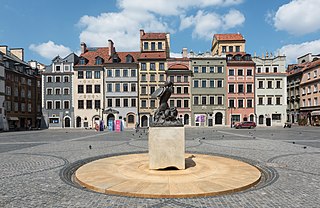
Museum of Warsaw is a museum in the Old Town Market Place in Warsaw, Poland. It was established in 1936.
Sight 10: Saint Hyacinth's Church
St. Hyacinth's Church, named after Saint Hyacinth of Poland, is a Baroque Catholic church building located in Warsaw's New Town at Freta Street 8/10.
Wikipedia: St. Hyacinth's Church, Warsaw (EN), Website, Twitter, Facebook
Sight 11: Pauline Church of the Holy Spirit and Paul The Hermit

The Church of the Holy Spirit is a church at 3 Długa Street, in Warsaw's New Town.
Sight 12: Muzeum Cechu Rzemiosł Skórzanych
The Jan Kiliński Museum of the Leather Crafts Guild is a museum in Warsaw's Old Town, located in the Shoemakers' tenement house at 10 Wąski Dunaj Street.
Sight 13: Statue of the Little Insurgent
The Little Insurrectionist is a statue in commemoration of the child soldiers who fought and died during the Warsaw Uprising of 1944. It is located on Podwale Street, Warsaw, Poland, next to the ramparts of Warsaw's Old Town.
Sight 14: Oświęcim II
The sculpture of Auschwitz II – a sculpture by Franciszek Strynkiewicz, placed in the zwinger of the defensive walls of the Old Town in Warsaw, between Podwale and Rycerska Streets, south of the outlet of Wąski Dunaj Street.
Sight 15: Jan Kiliński
Jan Kiliński Monument is a monument in Warsaw, Poland, located on Podwale Street, next to the intersection with Piekarska Street, in the Old Town neighbourhood of the Downtown district. The 8-metre-tall monument consists of a 4-metre-tall bronze statue of Jan Kiliński, a 19th-century artisan, politician, and rebel, who was a colonel in the insurgents forces during the Kościuszko Uprising, placed on a granite pedestal. It was designed by Stanisław Jackowski, and unveiled on 19 April 1936 at the Krasiński Square. It was removed from there in 1942, during the German occupation, and reinstalled in 1946. The monument was moved to its current location in 1959.
Sight 16: Museum of Artisanry and Precision Crafts
The Museum of Artistic and Precision Crafts at the Guild of Goldsmiths, Watchmakers, Opticians, Engravers and Bronze Workers m.st Warsaw, also known as the Museum of Clocks, is a museum in Warsaw located at Piekarska Street in Warsaw's Old Town. It collects monuments of old and contemporary artistic and precision craftsmanship.
Wikipedia: Muzeum Rzemiosł Artystycznych i Precyzyjnych w Warszawie (PL)
Sight 17: Museum of Pharmacy
Muzeum Farmacji im. Antoniny Leśniewskiej w Warszawie is a museum of pharmacy in Warsaw, Poland. It is a branch of the Museum of Warsaw. It was established in 1985. Exhibits include original pharmaceutical laboratory equipment from the 1930s. There are also displays covering the history of Warsaw pharmacies. There are over 2,500 antiquities on display at the museum.
Wikipedia: Antonina Leśniewska Museum of Pharmacy (EN), Website
Sight 18: Warsaw Mermaid
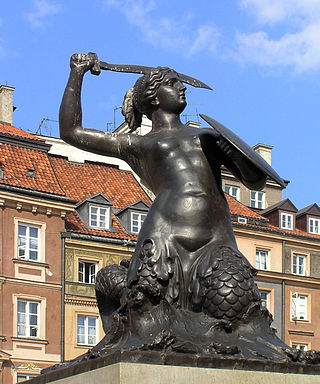
The Mermaid Monument is a monument located in the Old Town Market Square in Warsaw.
Sight 19: Church of the Gracious Mother of God
The Jesuit Church, also known as Church of the Gracious Mother of God, is an ornate church within the Old Town precinct in Warsaw, Poland. The temple stands on Świętojańska Street, adjacent to St John's Cathedral, and is one of the most notable mannerist-style churches in Warsaw.
Sight 20: Kościół pw. Świętego Marcina
St. Martin's Church is a church in Warsaw, Poland. It is located on ulica Piwna in the Polish capital's Old Town.
Sight 21: Pomnik Jana Zachwatowicza
Jan Zachwatowicz Monument is a bronze statue in Warsaw, Poland, located in the Old Town neighbourhood of the Downtown district. It is placed at the Castle Square. The monument is dedicated to Jan Zachwatowicz, a 20th-century architect and conservator-restorer who led the effort of reconstruction of Warsaw following its destruction in the Second World War. It was designed by Karol Badyna and unveiled on 4 March 2021.
Sight 22: Pamięci zamordowanych w Katyniu
The Katyn Monument in Warsaw is a monument commemorating the victims of the Katyn massacre, designed by the sculptor Andrzej Renes, located in Warsaw at Podwale Street in the area of the Castle Square, unveiled in its original location on 6 May 1998, and in its new location on 13 April 2012.
Sight 23: Pałac Szaniawskich
The Szaniawski Palace is a palace located at 8 Miodowa Street in Warsaw.
Sight 24: Pałac Młodziejowskiego
Młodziejowski Palace (Polish: Pałac Młodziejowskiego, Polish pronunciation: [ˈpawat͡s mwɔd͡ʑɛjɔvˈskʲɛɡɔ], also the Morsztyn Palace, is a palace located in Warsaw at 10 Miodowa Street, with annexes at 7 Podwale Street. The palace was erected in the Baroque style at the end of the 17th century. It is adjacent to the Branicki and Szaniawski palaces.
Sight 25: Branicki Palace
The Branicki Palace is an 18th-century magnate's mansion in Warsaw, Poland. Situated at the junction of Podwale and Miodowa Streets, it was constructed for the aristocratic Branicki-Gryf family in the Rococo style. The palace is known for its elaborate sculptures and statues above the cornice.
Sight 26: St. Anne's Church
Get Ticket*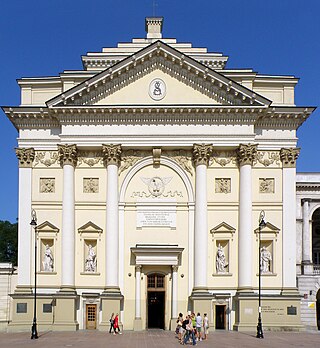
St. Anne's Church is a Roman Catholic church in the historic center of Warsaw, Poland, adjacent to the Castle Square, at Krakowskie Przedmieście 68. It is one of Poland's most notable churches with a Neoclassical facade. The church ranks among Warsaw's oldest buildings. Over time, it has seen many reconstructions, resulting in its present-day appearance, unchanged since 1788. Currently it is the main church parish of the academic community in Warsaw.
Wikipedia: St. Anne's Church, Warsaw (EN), Website, Facebook, Instagram, Youtube
Sight 27: Kościół Niepokalanego Poczęcia Najświętszej Maryi Panny
The Church of the Immaculate Conception of the Blessed Virgin Mary in Warsaw, known as Res Sacra Miser, is a former convent church of the Discalced Carmelite nuns, currently the rector's church in Warsaw at Krakowskie Przedmieście. The temple is located in the building of the Caritas Charity Center of the Archdiocese of Warsaw Res Sacra Miser.
Sight 28: Matka Boska Passawska
The Statue of Our Lady of Passau is a votive sculpture of the Virgin Mary located on Krakowskie Przedmieście in Warsaw, near the Castle Square. It is the second – after the Sigismund's Column from 1644 – the oldest monument in Warsaw.
Sight 29: Museum of Caricature
Museum of Caricature is a museum in Warsaw, Poland. The museum was founded by Eryk Lipiński in 1978, and he was the director of the museum until his death in 1991. The museum has a collection of over 20,000 pieces by Polish and foreign artists.
Sight 30: Pałac Prymasowski
The Primate's Palace is a historical palace at the Senatorska Street in the Śródmieście district of Warsaw, Poland.
Sight 31: Blank Palace
The Blank Palace is a historic building on Senatorska Street in Warsaw, Poland. It is adjacent the much larger Jabłonowski Palace.
Sight 32: Nike
The Monument to the Heroes of Warsaw, also known as the Warsaw Nike, is a statue located at the intersection of Nowy Przejazd and Aleja Solidarności in Warsaw. The monument commemorates all those who died in the city in 1939 to 1945, including participants in the defense of Warsaw in September 1939, the participants of the Warsaw Ghetto Uprising and the Warsaw Uprising, and the victims of German terror in the occupied capital.
Sight 33: Kościół Przemienienia Pańskiego
The Church of the Transfiguration is a Baroque church of the Capuchin Fathers located at Miodowa Street in Warsaw. It is part of the Capuchin monastery complex.
Sight 34: Pałac Arcybiskupi
The Borchów Palace, also known as the House of the Archbishops of Warsaw or the Archbishop's Palace, is a palace located at 17/19 Miodowa Street in Warsaw. From 1843 it was the seat of the archbishops of Warsaw.
Sight 35: Pałac Teppera-Dückerta
The Palace of the Four Winds, also known as the Tepper Palace, is a rococo palace in Warsaw located at ulica Długa 38/40.
Sight 36: Museum of Independence
The Museum of Independence is a museum in Warsaw, Poland. It was established on 30 January 1990 as the Museum of the History of Polish Independence and Social Movements and is located in the former Przebendowski Palace at al. 'Solidarity' 62, but it also has these branches:X Pavilion Museum at the Warsaw Citadel Museum of Pawiak Prison Mausoleum of Struggle and Martyrdom
Sight 37: Państwowe Muzeum Archeologiczne
Państwowe Muzeum Archeologiczne w Warszawie is a museum located in the old Warsaw Arsenal in Warsaw, Poland. The museum was established in 1923 and has been in its current location since 1958.
Wikipedia: National Museum of Archaeology, Poland (EN), Website
Sight 38: Monte Cassino
The Monument to the Battle of Monte Cassino is a monument in Warsaw, Poland located in the square between General Anders Street and the gates of the Krasiński Gardens near the National Archaeological Museum in the Warsaw Arsenal.
Wikipedia: Monument to the Battle of Monte Cassino, Warsaw (EN)
Sight 39: Resztki gmachu Pasażu Simonsa
Simons Passage – a multifunctional commercial and service complex, which in the years 1903–1944 was located at the intersection of Długa and Nalewek streets in Warsaw.
Sight 40: Pomnik Ofiar w Pasażu Simonsa
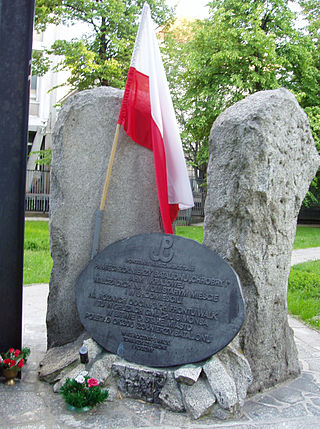
The Monument of the Chrobry I Battalion in Warsaw – a monument unveiled in 1989 commemorating the "Chrobry I" Battalion of the Home Army.
Wikipedia: Pomnik batalionu Chrobry I w Warszawie (PL), Website
Sight 41: Ogród Krasińskich
The Krasiński Garden is an urban park in Warsaw, Poland, within the neighbourhood of Muranów in the Downtown district. It is located between Świętojerska, Andersa, Stare Nalewki, and Długa Street, and borders Krasiński Square to the east.
Share
Disclaimer Please be aware of your surroundings and do not enter private property. We are not liable for any damages that occur during the tours.
GPX-Download For navigation apps and GPS devices you can download the tour as a GPX file.
